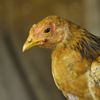Dying hurts (usually). And I think one of the biggest reasons why there's so much suffering in nature is that most species give birth to dozens, hundreds, or tens of thousands of offspring, most of which die a few days after birth. Even if the quality of life for an insect that reached maturity were positive, the large numbers of offspring that die young would more than offset the balance. (This is a concise statement of Yew-Kwang Ng's "Buddhist premise" in "Towards Welfare Biology.")
I would love to learn more about the details of this. In particular:
I would love to learn more about the details of this. In particular:
- How many offspring do different species give birth to, on average? (Ng has a few figures in "Towards Welfare Biology.")
- How many of those offspring are sentient before they die? (I assume that many of them get eaten or fail to thrive while still eggs, which presumably can't suffer.)
- What's the distribution of how long the offspring live? Something like exponential decay? If we know after how many days the babies begin to become sentient, then this information could answer the above question.
- How do the babies die? What fraction are eaten? Killed by parasites? Overcome by bacteria? Dehydrate? Starve? Freeze? What else?
- How painful are each of those ways of dying?
- Which kinds of ecosystems have longer-lived organisms with fewer offspring per parent pair? Are there practical cases where humans choose between different types of ecosystems to bring about (e.g., when introducing new species, reforesting, grass-fed cows displacing smaller and shorter-lived species, etc.)?
- Obviously, most human uses of land remove many short- and long-lived organisms. One example is paving paradise to put up a parking lot, where there are no plants and hence no animal food and hence no suffering of dying babies.




